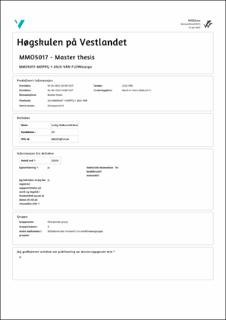| dc.description.abstract | This research comprehensively models swell sea states in Southern Nigerian water. It investigates the response and nature of the sea loads experienced by installation vessels in a typical Southern Nigerian Sea state. Further, it assesses the implication of swells on the response of an installation vessel and the significance of the response to the planning and execution of installation operations in Southern Nigeria. Due to their high energy and long periods, swells have been identified to pose some challenges to vessel motions concerning particularly around vessel's resonance period. With the identification of swell as the dominant spectra in Southern Nigeria and seemingly limited scholarly studies on the motion characteristics of vessels in this region, the master’s thesis deemed it necessary to embark on this research to uncover the spectra-response relationship and provide additional insight into existing knowledge. Through hybrid modelling techniques (HMT), which combined extensive literature studies, mathematical modelling of ocean waves, spectra modelling, 3D modelling, and numerical simulations using ShipX, a frequency-domain spectra analysis was carried out for the Asabo deep-water field, Forcados, and Bonga field. In total, 19 spectra with varying significant wave heights (Hs) and peak periods (TP) were analysed. Apart from the consistency seen in the data where swells dominate Southern Nigerian waters, the vessel motion analysis demonstrates significant motion amplification in beams seas, particularly at about 8 seconds of spectra peak period. Hence, roll motion is found to be more significant in the first instance where viscous effects and damping from bilge keels were neglected. Subsequently, with the inclusion of viscous effects and bilge keels in the rolling regime, a significant reduction in the roll motion was recorded, but motion amplification around 8s shows persistency. With the further assessment of crew comfort using motion-induced sickness as a criterion, the findings correlate with roll motion as the primary contributor to the recorded motion sickness dose value (MSDV). This highlights and underscores the need for an adequate roll-stabilizing mechanism to be incorporated in the design of installation vessels. At the same time, reliance on data and favourable weather windows would be used for a safe planning and execution of installation operations. Overall, this thesis contributes to the advancement of sea state modelling in Southern Nigerian waters and provides valuable insight for the design of offshore structures, planning and execution of installation operations in Southern Nigeria. | en_US |

